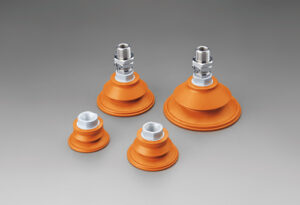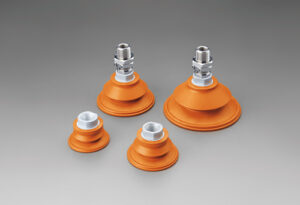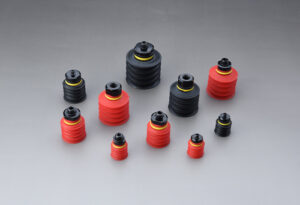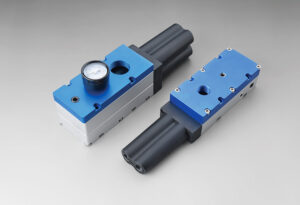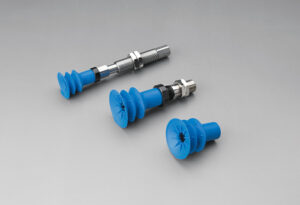Introduction:
Vacuum generators play a crucial role in various industries, enabling the manipulation and control of objects using suction. If you’re considering purchasing a vacuum generator but have questions about how they work, you’ve come to the right place. This article aims to comprehensively understand vacuum generators, their operation, and the factors to consider when choosing the right one for your needs.
I. Understanding Vacuum Generators
Vacuum generation is the process of creating a pressure differential that generates suction for various applications. Vacuum generators can be classified into different types, including ejectors, pumps, and venturi systems. These devices utilize other principles to generate and maintain the desired vacuum level.
II. Operating Principles of Vacuum Generators
Vacuum generators consist of essential components that work together to create suction. When a vacuum generator is activated, it induces a pressure drop between the system’s inlet and outlet, creating a vacuum.
One common type of vacuum generator is the ejector-based system. Ejectors use the Venturi effect to create a pressure differential. Compressed air or gas is directed through a nozzle, accelerating its velocity and creating a low-pressure region. This low-pressure region generates suction by drawing in surrounding air or gas. Ejector-based systems are often used in applications where high vacuum levels are required.
Another type of vacuum generator is the vacuum pump. Vacuum pumps come in various forms, such as rotary vane pumps and diaphragm pumps. These pumps use mechanical or positive displacement mechanisms to evacuate air or gas from a closed system, creating a vacuum. Vacuum pumps are commonly used when a consistent and reliable vacuum source is needed.
Venturi-based vacuum generators operate on the principles of fluid dynamics. These systems use fluid flow through a constriction, typically a venturi tube, to generate a pressure differential. As the fluid passes through the contraction, its velocity increases, causing a decrease in pressure. This pressure drop creates suction, making venturi-based generators suitable for applications requiring moderate vacuum levels.
III. Types of Vacuum Generators
A. Ejector-based Vacuum Generators
Ejector-based vacuum generators contain several key components, including a motive fluid inlet, a mixing chamber, a suction nozzle, and a discharge outlet. When compressed air or gas is directed into the motive fluid inlet, it enters the mixing chamber, where it combines with the surrounding ambient air or gas. This mixture then passes through the suction nozzle, creating a low-pressure region that generates suction.
Ejector-based vacuum generators offer advantages such as simplicity, compact size, and achieving high vacuum levels. However, they may have limitations in terms of noise levels, efficiency, and sensitivity to variations in operating conditions.
B. Vacuum Pumps
Vacuum pumps are commonly used in applications that require a consistent and continuous vacuum source. Rotary vane pumps, for example, operate by rotating a series of vanes inside a cylindrical chamber. As the vanes spin, they trap and compress the gas, gradually evacuating the system and creating a vacuum. Diaphragm pumps, on the other hand, use flexible diaphragms to generate a pumping action, which results in the removal of gas molecules from the system.
Vacuum pumps offer high pumping speed, reliability, and stable vacuum level advantages. However, they may have limitations in terms of cost, maintenance requirements, and the potential for oil contamination in certain pump types.
C. Venturi-based Vacuum Generators
Venturi-based vacuum generators utilize the principles of fluid dynamics to create suction. These generators consist of a venturi tube or nozzle connected to a high-pressure fluid source. As the fluid flows through the venturi tube, its velocity increases, resulting in a pressure drop. This pressure drop creates suction, enabling the generator to pull in surrounding air or gas.
Venturi-based vacuum generators are known for their simplicity, compact size, and energy efficiency. They are often used in applications requiring moderate vacuum levels and can be advantageous when a compressed air or gas source is readily available. However, their performance may be affected by factors such as the flow rate and pressure of the fluid source.
V. Factors to Consider When Choosing a Vacuum Generator
When selecting a vacuum generator for your specific application, several important factors should be taken into consideration:
- Performance Specifications: Determine the required vacuum level and flow rate that align with your application’s needs. Consider factors such as the volume of the objects to be lifted or manipulated and the speed at which the vacuum needs to be generated.
- Material Compatibility and Environmental Considerations: Ensure that the vacuum generator is compatible with the materials and substances involved in your application. Consider factors such as chemical compatibility, temperature resistance, and the presence of dust or debris.
- Maintenance Requirements and Serviceability: Assess the maintenance needs of the vacuum generator, including the frequency of required maintenance tasks such as replacing filters or lubricants. Consider the ease of accessing and servicing the components of the generator.
- Energy Efficiency and Operating Costs: Evaluate the energy efficiency of the vacuum generator to minimize operating costs. Look for features such as adjustable suction levels, automatic shut-off mechanisms, and energy-saving technologies.
- Consideration of Specific Application Requirements: Consider any specific requirements of your application, such as noise restrictions, size constraints, or the need for specialized accessories or attachments. Consulting with experts or suppliers can provide valuable insights tailored to your needs.
VI. Troubleshooting Common Vacuum Generator Issues
While vacuum generators are generally reliable, there may be instances where issues arise. Some common problems include inadequate suction, leaks, or fluctuations in vacuum levels. Troubleshooting these issues often involves:
- Inspecting the system for leaks.
- Checking connections and valves.
- Ensuring proper maintenance of the generator and associated components.
It is essential to consult the manufacturer’s instructions and guidelines for troubleshooting specific issues and seek assistance from knowledgeable professionals if needed.
VII. Conclusion
Understanding how vacuum generators work is essential when considering a purchase for your specific application. We have explored the operating principles of vacuum generators, including ejector-based systems, vacuum pumps, and venturi-based generators. We have also discussed factors to consider when selecting a vacuum generator and provided an overview of standard troubleshooting techniques.
By clearly understanding how vacuum generators function and considering your application’s requirements, you can make an informed decision and choose the right vacuum generator that will meet your needs effectively.
Remember, if you have any further questions or require additional information, do not hesitate to consult experts in the field or contact reputable suppliers.
That concludes our article on how vacuum generators work. Please let me know if you have any other requests or need further assistance!



